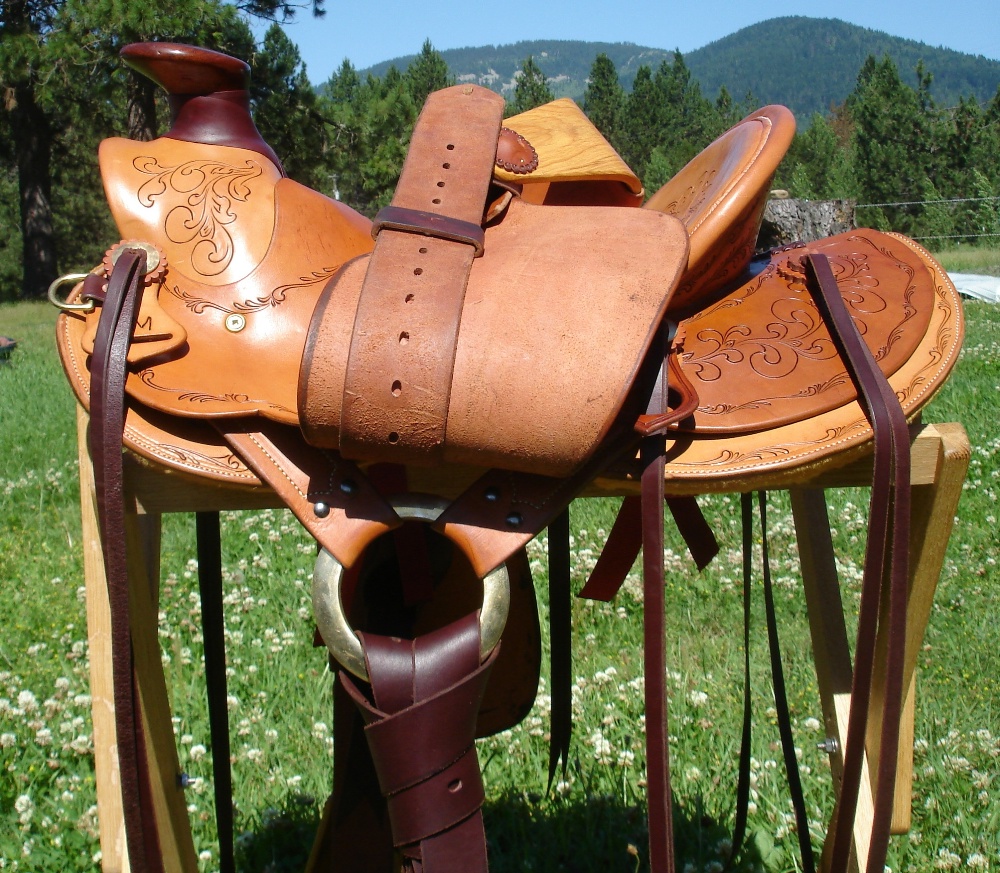[QUOTE=2enduraceriders;8016116]
The first saddle is not even set up correctly for a center fired rigging. They have it directly under the riders leg. If you hate the rear cinch in the way you will really hate that![/QUOTE]
With all due respect, it’s designed perfectly for a saddlemaker’s definition of centerfire. For some reason a group of folks shanghaied the term centerfire to mean “any saddle with double rigging on the tree, but used with a single cinch”. Endurance saddles in particularly seem to be the worst offenders in the sales material for doing this.
Centerfire in the traditional sense means this:
http://lib.store.yahoo.net/lib/thesaddleshop/saddle-rigging-positions.jpg
or
http://horseandrider.com/content/content/13181/SaddleRigging1-282x300.png
or
http://eclectic-horseman.com/wp-content/uploads/2004/01/saddle_01.jpg
“Full position” is the front rigging set either under the fork, on the low point of the front bar pad, or something “up front”. The exact location varies depending on the maker, but it’s very forward.
The rear marker is likewise up for debate, but generally is right under the cantle.
Centerfire is then RIGHT BETWEEEN THOSE MARKS, hence “center”. Yes, that’s right under most people’s legs unless the stirrups are hung way forward, but fender position has nothing to do with centerfire. Rigging position depends how the cinch and rigging apply force to the tree, not the fender position.
So when someone comes along and calls this centerfire:
http://img.photobucket.com/albums/v70/kysaanne/GHS/DSC02768.jpg
…it’s abusing the term centerfire. That’s a double rigged saddle, rigged with a single cinch, with the cinch set at about 7/8 position. It’s NOT centerfire.
Likewise (and I don’t know if this is supposedly centerfire):
http://jjmaxwell.com/wp-content/uploads/2010/07/step4-300x225.jpg
This is full or 15/16 position, rigged single.
Because using a double rigged saddle without a rear cinch overloads the front of the saddle, and generally causes even a correctly shaped tree to dive down in front.
Centerfire exists because it perfectly balances the forces applied to the tree. It’s directly in the middle of the bar, and tightening the cinch doesn’t cause the tree to creep.
If you use full rigging and a snug rear cinch, you end up with the same thing, but you need two cinches and not all horses have shoulders that allow a cinch that far forward.
By the same measure, not all horses have a barrel that can take a centerfire cinch. Placed that far back, it can impede breathing on some animals. Then there CAN be issues with interfering with leg position, but a good saddle can be designed regardless.
Centerfire is a very traditional vaquero rigging, it’s just not sure common anymore since stock horses have generally changed shape over the years.






